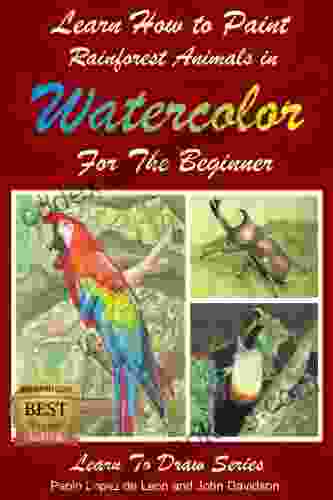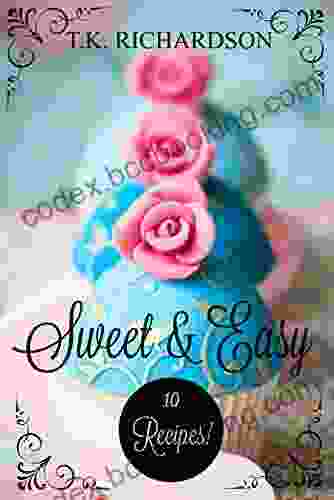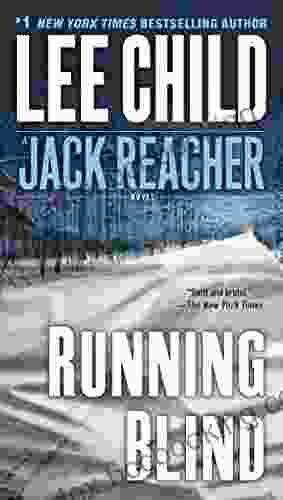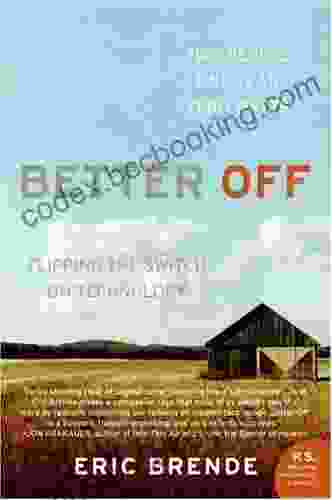Learn How To Paint Rainforest Animals In Watercolor For The Beginner

Are you a beginner who wants to learn how to paint rainforest animals in watercolor? If so, then you're in the right place! This comprehensive guide will teach you everything you need to know to get started, from choosing the right materials to mastering basic techniques. With step-by-step instructions and plenty of practice exercises, you'll be able to create beautiful rainforest animal paintings in no time.
4.7 out of 5
| Language | : | English |
| File size | : | 8082 KB |
| Text-to-Speech | : | Enabled |
| Screen Reader | : | Supported |
| Enhanced typesetting | : | Enabled |
| Print length | : | 106 pages |
| Lending | : | Enabled |
Materials You'll Need
Before you can start painting, you'll need to gather a few basic materials. Here's what you'll need:
- Watercolor paints
- Brushes
- Paper
- Water
- Palette
Watercolor Paints
There are many different brands and types of watercolor paints available, so it's important to choose the ones that are right for you. For beginners, I recommend using a student-grade paint set. These paints are typically less expensive than professional-grade paints, and they're still good quality.
Brushes
You'll need a variety of brushes for different painting techniques. A good starter set will include a round brush, a flat brush, and a detail brush.
Paper
Watercolor paper is specially designed to absorb water and paint without buckling or warping. It's important to use watercolor paper when painting with watercolors, as other types of paper will not work well.
Water
You'll need water to mix your paints and to rinse your brushes. Make sure to use clean water, as dirty water can ruin your paintings.
Palette
A palette is a surface on which you can mix your paints. You can use a plastic or ceramic palette, or even a piece of white paper.
Basic Techniques
Once you have your materials, you're ready to start learning the basic techniques of watercolor painting. Here are a few tips to get you started:
- Start with a light wash of color. This will help you to avoid creating muddy colors.
- Let your layers dry completely before adding another layer. This will help you to avoid smudging your colors.
- Use a variety of brushstrokes. This will add interest and texture to your paintings.
- Don't be afraid to experiment. The best way to learn is to try new things.
Step-by-Step Instructions
Now that you know the basic techniques of watercolor painting, you're ready to start painting some rainforest animals. Here are some step-by-step instructions for painting a few different animals:
How to Paint a Toucan
- Start by sketching the basic shape of the toucan's body. Use a light wash of color to fill in the body.
- Next, paint the toucan's beak. Use a dark color for the tip of the beak, and a lighter color for the rest of the beak.
- Add some details to the toucan's body, such as its feathers and eyes.
- Finally, add a background to your painting. You can use a light wash of color, or you can paint a more detailed background.
How to Paint a Macaw
- Start by sketching the basic shape of the macaw's body. Use a light wash of color to fill in the body.
- Next, paint the macaw's feathers. Use a variety of colors to create a realistic look.
- Add some details to the macaw's body, such as its beak and eyes.
- Finally, add a background to your painting. You can use a light wash of color, or you can paint a more detailed background.
How to Paint a Sloth
- Start by sketching the basic shape of the sloth's body. Use a light wash of color to fill in the body.
- Next, paint the sloth's fur. Use a variety of shades of green to create a realistic look.
- Add some details to the sloth's body, such as its face and paws.
- Finally, add a background to your painting. You can use a light wash of color, or you can paint a more detailed background.
Practice Exercises
The best way to learn how to paint rainforest animals in watercolor is to practice. Here are a few practice exercises to help you get started:
- Paint a simple wash of color. This will help you to get used to controlling the amount of water you use, and it will also help you to create even washes of color.
- Paint a gradient. This will help you to learn how to transition from one color to another.
- Paint a simple shape. This will help you to practice controlling your brushstrokes.
- Paint a simple animal. This will help you to put all of your skills together and create a complete painting.
Now that you've learned the basics of watercolor painting, you're ready to start painting some beautiful rainforest animals. With practice, you'll be able to create stunning paintings that will amaze your friends and family.
So what are you waiting for? Grab your materials and start painting today!
How to Paint a Toucan
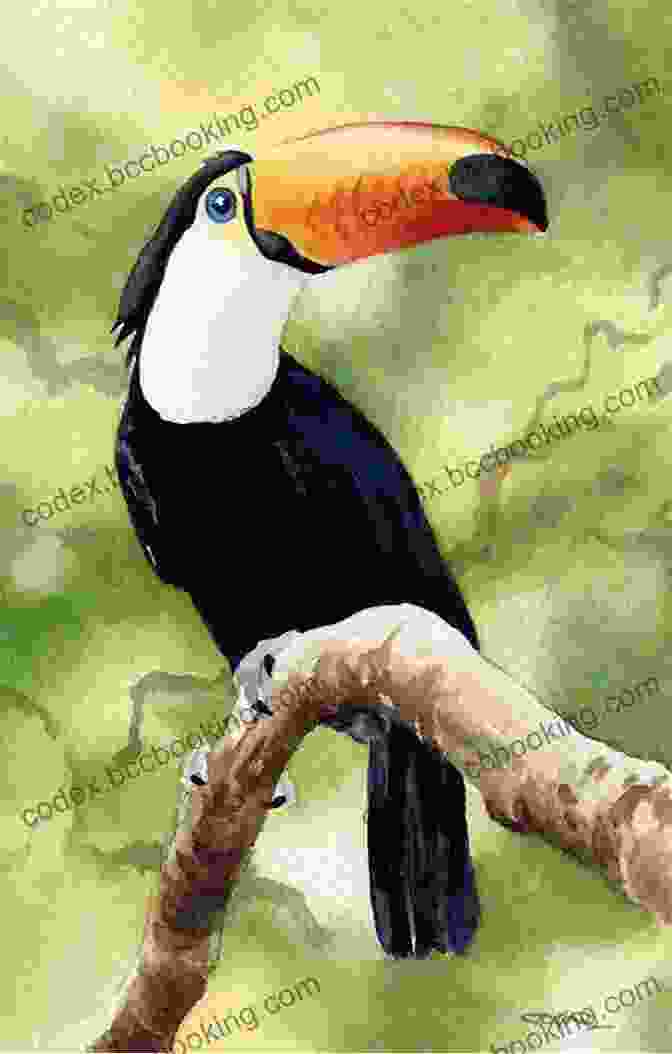
Toucans are beautiful birds with colorful beaks and feathers. They are found in the rainforests of Central and South America. To paint a toucan, you will need the following materials:
- Watercolor paints
- Brushes
- Paper
- Water
- Palette
Follow these step-by-step instructions to paint a toucan:
- Start by sketching the basic shape of the toucan's body. Use a light wash of color to fill in the body.
- Next, paint the toucan's beak. Use a dark color for the tip of the beak, and a lighter color for the rest of the beak.
- Add some details to the toucan's body, such as its feathers and eyes.
- Finally, add a background to your painting. You can use a light wash of color, or you can paint a more detailed background.
Here are some tips for painting a toucan:
- Use a variety of brushstrokes to create different textures. For example, you can use a light touch to create soft feathers, and a heavier touch to create sharp beaks.
- Don't be afraid to experiment with colors. Toucans come in a variety of colors, so feel free to use your imagination.
- Have fun! Painting should be enjoyable, so don't stress too much about getting it perfect. Just relax and let your creativity flow.
4.7 out of 5
| Language | : | English |
| File size | : | 8082 KB |
| Text-to-Speech | : | Enabled |
| Screen Reader | : | Supported |
| Enhanced typesetting | : | Enabled |
| Print length | : | 106 pages |
| Lending | : | Enabled |
Do you want to contribute by writing guest posts on this blog?
Please contact us and send us a resume of previous articles that you have written.
 Book
Book Novel
Novel Page
Page Chapter
Chapter Text
Text Story
Story Genre
Genre Reader
Reader Library
Library Paperback
Paperback E-book
E-book Magazine
Magazine Newspaper
Newspaper Paragraph
Paragraph Sentence
Sentence Bookmark
Bookmark Shelf
Shelf Glossary
Glossary Bibliography
Bibliography Foreword
Foreword Preface
Preface Synopsis
Synopsis Annotation
Annotation Footnote
Footnote Manuscript
Manuscript Scroll
Scroll Codex
Codex Tome
Tome Bestseller
Bestseller Classics
Classics Library card
Library card Narrative
Narrative Biography
Biography Autobiography
Autobiography Memoir
Memoir Reference
Reference Encyclopedia
Encyclopedia Larry Taylor
Larry Taylor Scott Kloos
Scott Kloos Lauren St John
Lauren St John Judy H Wright
Judy H Wright Ruth Manning Sanders
Ruth Manning Sanders Linda Nagata
Linda Nagata Kenroy Mulraine
Kenroy Mulraine Elliot Davis
Elliot Davis Emmanuel Mwembwa
Emmanuel Mwembwa K Gorman
K Gorman Paul A Zandbergen
Paul A Zandbergen Roach Mary
Roach Mary John Currence
John Currence Emily R King
Emily R King Eugene Fitch Ware
Eugene Fitch Ware Maria Lichty
Maria Lichty Laura D Rosenthal
Laura D Rosenthal Scoop Malinowski
Scoop Malinowski Moon Travel Guides
Moon Travel Guides Emma Goldman
Emma Goldman
Light bulbAdvertise smarter! Our strategic ad space ensures maximum exposure. Reserve your spot today!
 Jules VerneFollow ·3.5k
Jules VerneFollow ·3.5k Logan CoxFollow ·15.3k
Logan CoxFollow ·15.3k Alex FosterFollow ·17.2k
Alex FosterFollow ·17.2k Seth HayesFollow ·9k
Seth HayesFollow ·9k Jorge AmadoFollow ·6.4k
Jorge AmadoFollow ·6.4k Jermaine PowellFollow ·16.5k
Jermaine PowellFollow ·16.5k Troy SimmonsFollow ·19.9k
Troy SimmonsFollow ·19.9k Darnell MitchellFollow ·7.7k
Darnell MitchellFollow ·7.7k

 Isaias Blair
Isaias BlairEscape to Sunrise Cottage: A Captivating Read You Won't...
Are you ready for a...
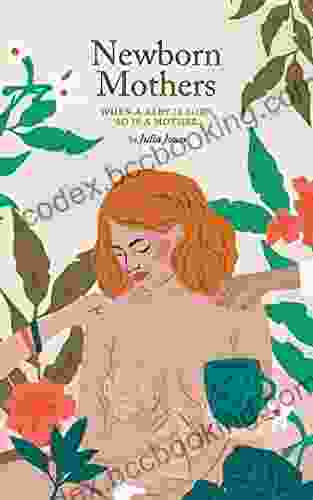
 Bradley Dixon
Bradley DixonWhen Baby Is Born, So Is Mother: A Comprehensive Guide to...
Giving birth is a...

 Mario Simmons
Mario SimmonsPhotographic Journal of Cruise Around South America: A...
Embark on an Extraordinary Expedition ...

 Langston Hughes
Langston HughesDream Achieved: Unlocking the Power Within to Make Your...
In the tapestry...
4.7 out of 5
| Language | : | English |
| File size | : | 8082 KB |
| Text-to-Speech | : | Enabled |
| Screen Reader | : | Supported |
| Enhanced typesetting | : | Enabled |
| Print length | : | 106 pages |
| Lending | : | Enabled |


